Tools
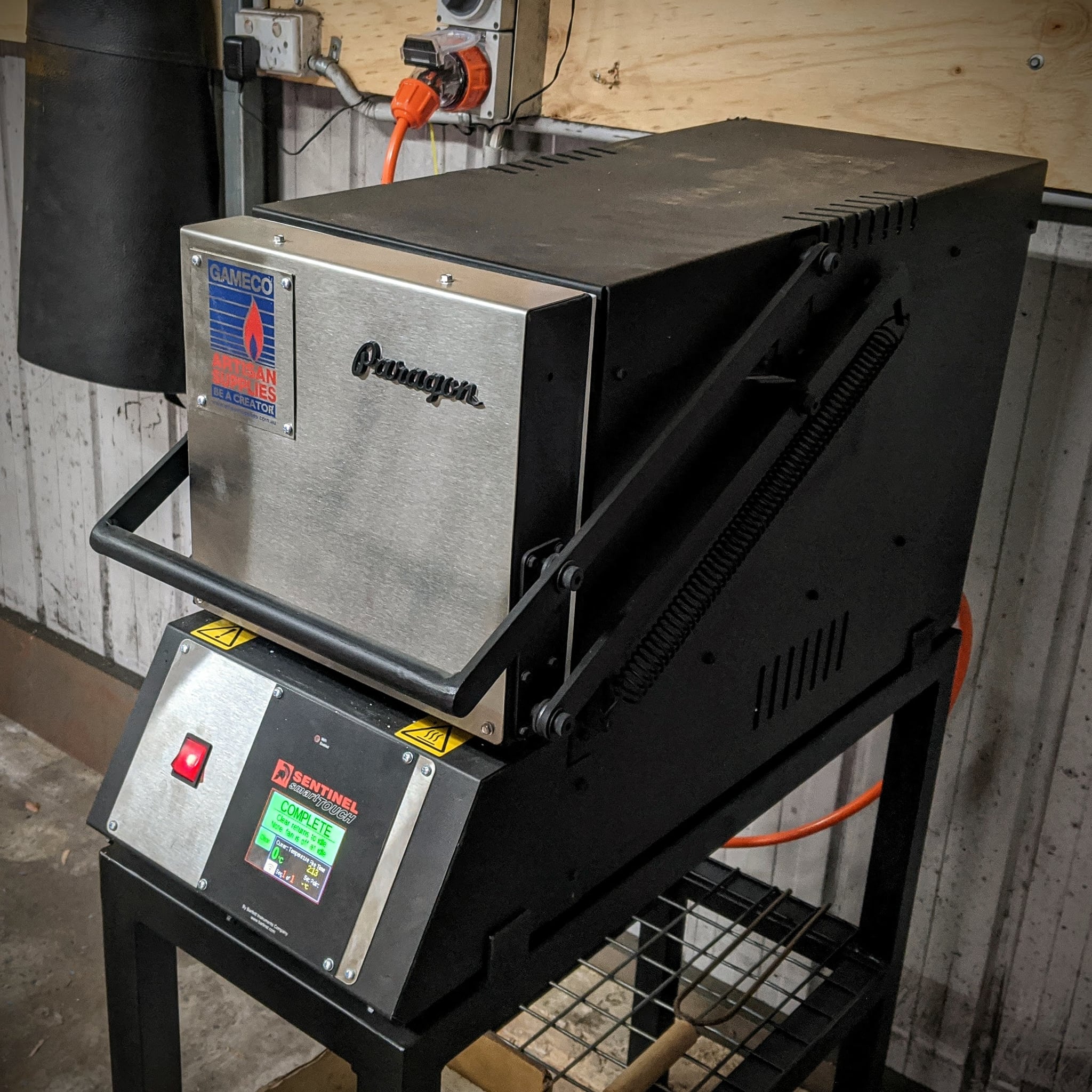
We bought this KM18T Pro 3 Zone Paragon heat treating furnace to replace the older Paragon heat treating furnaces we were using for stainless steel. The older ones got the job done, but they took four hours to reach operating temperature. This new furnace reaches operating temperature in about ten minutes.
This furnace was developed by Paragon in the USA in close collaboration with Corin Urquhart from Gameco. Corin is an experienced knifemaker and this shows in the features of this furnace.
 Adding a disc sander to the Radiusmaster adds a whole new set of abilities to an awesome machine. This is an after market mod or hack that is especially valuable with a variable speed motor. It also saves having another machine in the shop.
Adding a disc sander to the Radiusmaster adds a whole new set of abilities to an awesome machine. This is an after market mod or hack that is especially valuable with a variable speed motor. It also saves having another machine in the shop.
The disc is machined out of a 200mm round piece of aluminium. I had a 1 degree taper put on the disc so you can grind past the middle with a long blade and not have it flick back at you. It still grinds flat and is much safer than a flat disc. The radiusmaster can spin the disc in either the vertical or the horizontal position.
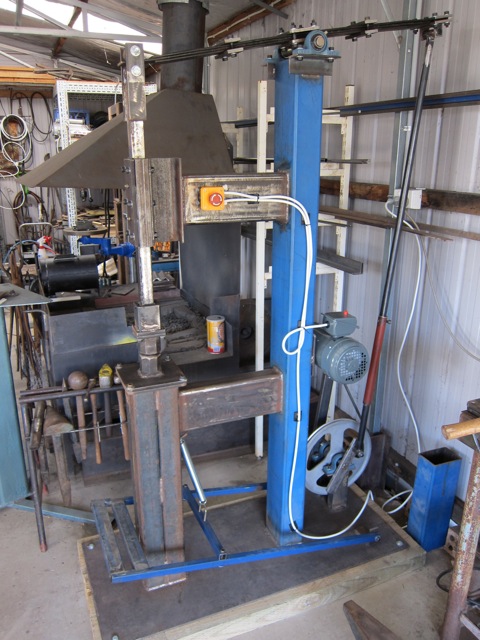
I bought the plans years ago from the Appalachian Blacksmith's Association to make my own power hammer. The parts slowly piled up as I found bits and pieces. Finally in July 2010 I stated construction. It was built over 12 days - a month of Sundays plus other days with lots of learning as I went.
I used a "Super Rusty" style, with inspiration from many other hammers on the web, but tried to keep it as simple as possible. Some statistics
- The "anvil" weighs 140kg made from four 75 x 75mm solid bars 800mm long
- The ram weighs 18kg with the dies, made from a 40 x 40mm solid bar
- The initial dies are made from a cut up 10lbs sledge hammer head
- Dies are bolt on and interchangeable
- The leaf springs were "straightened" in my Hydraulic press
- I use a 1hp motor going 1410 RPM
- The pulleys are 2" and 14" which provide just over 200 hits per minute
It was retired in 2014 and rehomed at a forge by the sea. Still thumping strong.
 I was recently asked to do a forging demonstration workshop at the local wood guild. Not wanting to drag my forge over, I used it as an excuse to make a mini-forge. I used a bit of 165mm 4mm pipe for the body, kept it simple without a door. Needed a back, some channel for the front leg, a bit of angle pipe and rod for the handle and a ring at the front to hold in the lining. I made it fit my existing venturi burner. It took about 3 hours to make, including lining and painting. Not bad for an afternoon's work. Â I cut up a bit of fire brick to protect the inside and give something to rest it on, and used another half brick for a door,
I was recently asked to do a forging demonstration workshop at the local wood guild. Not wanting to drag my forge over, I used it as an excuse to make a mini-forge. I used a bit of 165mm 4mm pipe for the body, kept it simple without a door. Needed a back, some channel for the front leg, a bit of angle pipe and rod for the handle and a ring at the front to hold in the lining. I made it fit my existing venturi burner. It took about 3 hours to make, including lining and painting. Not bad for an afternoon's work. Â I cut up a bit of fire brick to protect the inside and give something to rest it on, and used another half brick for a door,
It gets very hot on only 20 kPa, enough for forging and heat treating. It looks like it could weld, but I'll save that for the bigger forge so I don't wreck the lining. It's quick, quiet, hot and doesn't use much gas.
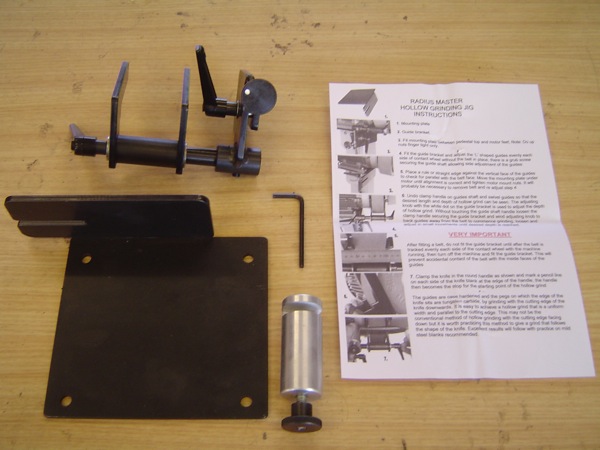
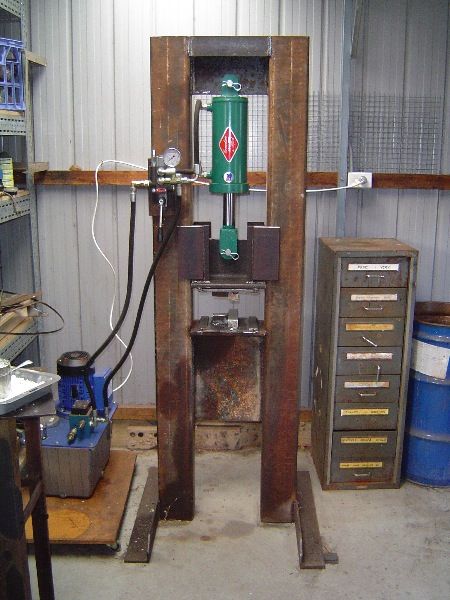 After many months of construction (and a few setbacks) we welcome a new addition to the workshop - the hydraulic press. This machine puts about 25 tons of pressure on hot steel - forge welding with ease. It is the strong silent type and complains much less than a striker, and will dramtically lift productivity levels in the shop.
After many months of construction (and a few setbacks) we welcome a new addition to the workshop - the hydraulic press. This machine puts about 25 tons of pressure on hot steel - forge welding with ease. It is the strong silent type and complains much less than a striker, and will dramtically lift productivity levels in the shop.
Initial tests in making damascus billets have come in about 16 times faster than by hand, without rushing! We didn't even break a sweat in making the first 180 layer billet. This should get faster as we get some practice.
This press makes damascus courses accessable to students of the Tharwa Valley Forge.
Many thanks to Myles and the guys at M and G Industrial for their help, support and advice.
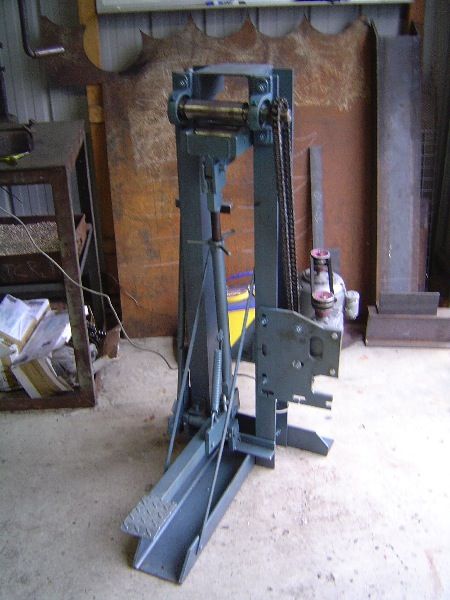 Thanks to the amazing work of Adam Fromholtz and Paul Krebs, we welcome a new machine to the forge - a Hugh McDonald Rolling Mill. Hugh's elegant design allows billets to be evenly drawn out with a minimum of fuss or noise.
Thanks to the amazing work of Adam Fromholtz and Paul Krebs, we welcome a new machine to the forge - a Hugh McDonald Rolling Mill. Hugh's elegant design allows billets to be evenly drawn out with a minimum of fuss or noise.
It is adjustable for different widths and can even draw out tapers. It also forge welds! Combined with the power of the hydraulic press, making damascus steel is much faster. It makes virtually no noise, so is suited for surburban workshops.
To purchase the fantastically detailed plans go to https://www.etsy.com/shop/McDonaldRollingMill